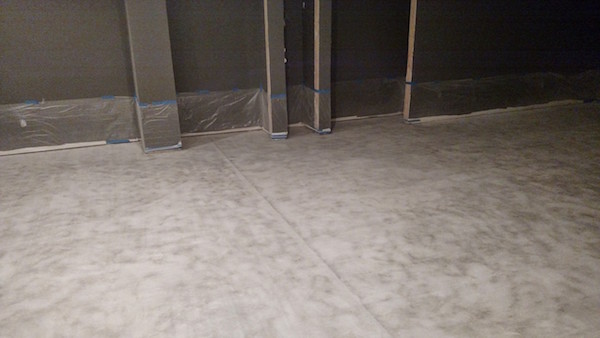
Concrete, a durable, versatile material if ever there was one, is showing up all over the place in new constructions and in remodels. Though its use in commercial and industrial settings has been common for quite some time, newer applications have been found for concrete that are quickly gaining a stronghold in residential settings. In a home, the rough, unfinished look of unadorned concrete is often less than desirable. Thankfully, there are several techniques that can add beauty and depth to the strength and durability of this versatile material, making it appropriate almost anywhere.
Concrete flooring in kitchens, bathrooms, and living rooms tend to lean towards a more polished and glossy finish. In garages, basements, laundry rooms, and other areas where moisture, oil, or other penetrating substances are the norm, concrete epoxy coating is an option that more and more homeowners are taking notice of. To attain these specialty finishes, proper concrete surface preparation is a necessity. The time and effort your contractor takes in surface preparation might seem excessive to the uninitiated, however, when these steps are skipped, your durable concrete surface can age prematurely or, even worse, look bad from the start.
Existing Concrete Surface Preparation
When you first pour a concrete surface, preparation is relatively straightforward. Using trowels to smooth and floats to bring excess water to the surface are the two main tasks, and with enough practice, just about anyone can handle it. When it comes to existing garage or basement flooring, however, concrete surface preparation is more an art than a science.
The first step in polishing an existing concrete installation is to thoroughly examine it. Any sealant or coating that is already there will need to be removed; if excessive laitance (a less stable layer of cement on the concrete’s surface) is present, it will also need to be removed until solid concrete is revealed. The next step in existing concrete surface preparation is a thorough cleaning. This often requires special equipment and/or specific chemicals to perform. Once the surface has been adequately cleaned, the final steps are determined by the kind of finish you want on the final floor.
Concrete Surface Preparation for Epoxy Coatings
Concrete epoxy coatings are very popular surfaces in commercial settings like auto showrooms, but are also making their way into the residential sector. Since concrete epoxy coatings are far more durable than paint and resistant to grease and oils, many homeowners are opting to install them in their garages. Concrete epoxy coating is likely to adhere best to a slightly roughed surface; so the final step in concrete surface preparation for epoxy is roughing the surface. This can be done mechanically (called profiling) or chemically (called etching). Both methods are effective, but the contractor you go with will probably have good reason to suggest one or the other.
Ready to start your concrete surface?
Find ProsConcrete Surface Preparation for Living Areas
Inside the home proper, concrete surface preparation is a little different. The incredibly smooth, polished concrete flooring that is popular in newer houses and condos requires a lot of grinding and polishing to look its best. Once the surface is cleaned and polished smooth, many choose to stain their concrete. Unlike stain for hardwoods, the best concrete stains are acid based and actually react chemically with the concrete surface; basically, instead of applying a color to the top of your floor concrete, stain actually changes the color of the concrete surface. Since concrete stain is chemically reactive, it is necessary to neutralize this reaction before the surface is sealed; this is done with special soaps which are later washed away with plain old water.
Unlike concrete epoxy coatings, which are their own protective barrier, smooth, polished concrete flooring must be adequately sealed to prevent stains. This is generally done by first applying a base coat sealant and then applying a final wax above it. The wax, just like a wax on other types of flooring, can be polished several times before it looses its luster; when the wax has passed its prime, you simply apply a new coat, which can be buffed to a showroom shine!
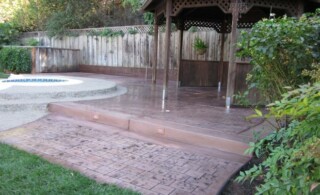 Concrete Cleaning: An Easy Makeover For Your Exterior
Concrete Cleaning: An Easy Makeover For Your Exterior 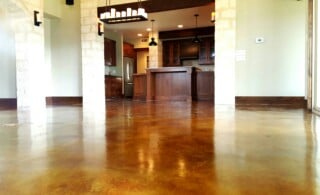 Concrete Flooring – Solid as a Rock
Concrete Flooring – Solid as a Rock 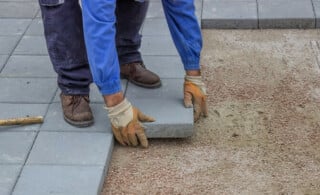 How to Choose a Concrete Contractor
How to Choose a Concrete Contractor 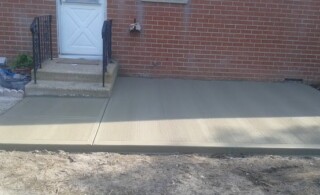 Concrete Mudjacking
Concrete Mudjacking  Explore the Possibilities of Concrete Siding
Explore the Possibilities of Concrete Siding 

Are You Familiar With This Topic? Share Your Experience.